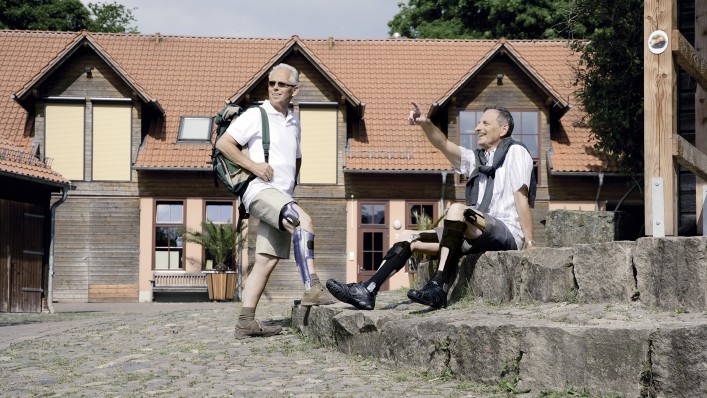Comparison of a conventional knee-ankle-foot orthosis and a new powered KAFO
Evaluation of gait symmetry in poliomyelitis.
A new powered knee–ankle–foot orthosis can improve gait symmetry for poliomyelitis subjects by influencing step width, swing time, stance time percentage, and knee flexion during swing phase when compared to ambulating with a drop-locked knee–ankle–foot orthosis.

E-MAG Active Electronically Controlled Knee Joint System. Otto Bock
| Background |
Compared to able-bodied subjects, subjects with post-polio syndrome and poliomyelitis demonstrate a preference for weight-bearing on the non-paretic limb, causing gait asymmetry.
| Objectives |
The purpose of this study was to evaluate the gait symmetry of the poliomyelitis subjects when ambulating with either a drop-locked knee–ankle–foot orthosis or a newly developed powered knee–ankle–foot orthosis.
| Study design |
Quasi experimental study.
| Methods |
Seven subjects with poliomyelitis who routinely wore conventional knee–ankle–foot orthoses participated in this study and received training to enable them to ambulate with the powered knee–ankle–foot orthosis on level ground, prior to gait analysis.
| Results |
There were no significant differences in the gait symmetry index of step length (p = 0.085), stance time (p = 0.082), double-limb support time (p = 0.929), or speed of walking (p = 0.325) between the two test conditions. However, using the new powered knee–ankle–foot orthosis improved the symmetry index in step width (p = 0.037), swing time (p = 0.014), stance phase percentage (p = 0.008), and knee flexion during swing phase (p ⩽ 0.001) compared to wearing the drop-locked knee–ankle–foot orthosis.
| Conclusion |
The use of a powered knee–ankle–foot orthosis for ambulation by poliomyelitis subjects affects gait symmetry in the base of support, swing time, stance phase percentage, and knee flexion during swing phase.
| Clinical relevance |
A new powered knee–ankle–foot orthosis can improve gait symmetry for poliomyelitis subjects by influencing step width, swing time, stance time percentage, and knee flexion during swing phase when compared to ambulating with a drop-locked knee–ankle–foot orthosis.
| References |
Evaluation of gait symmetry in poliomyelitis subjects: Comparison of a conventional knee-ankle-foot orthosis and a new powered knee-ankle-foot orthosis, Arazpour M, Ahmadi F, Bahramizadeh M, Samadian M, Mousavi ME, Bani MA, Hutchins SW. Prosthet Orthot Int. 2015 Aug 12. pii: 0309364615596063. [Epub ahead of print]
The-influence-of-a-powered-knee-ankle-foot-orthosis-on-walking-in-poliomyelitis-subjects-A-pilot-studyThe influence of a powered knee-ankle-foot orthosis on walking in poliomyelitis subjects: A pilot study, Arazpour M, Moradi A, Samadian M, Bahramizadeh M, Joghtaei M, Ahmadi Bani M, Hutchins SW, Mardani MA. Prosthet Orthot Int. 2016 Jun;40(3):377-83. doi: 10.1177/0309364615592703. Epub 2015 Jul 16.
| Further reading |
The physiological cost index of walking with a powered knee-ankle-foot orthosis in subjects with poliomyelitis: A pilot study. Arazpour M, Ahmadi Bani M, Samadian M, Mousavi ME, Hutchins SW, Bahramizadeh M, Curran S, Mardani MA. Prosthet Orthot Int. 2016 Aug;40(4):454-9. doi: 10.1177/0309364615592697. Epub 2015 Jul 20.
